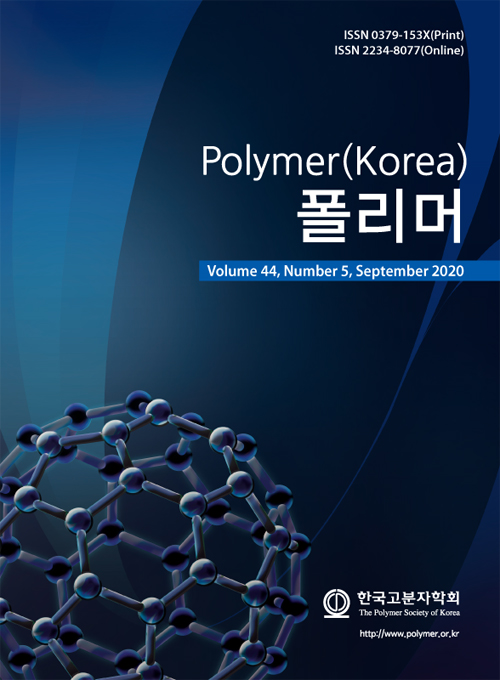This study provides detailed
information on the curing system using a catalytic reagent
(3-(2-phenyl-1-imidazolyl)propionitrile, 2PZ-CN), which is capable of anionic
ring opening polymerization of epoxide as a way to improve thermal conductivity
of diglycidyl ether of bisphenol A (DGEBA) epoxy resin. First, reaction
behavior of the curing system of DGEBA/2PZ-CN was investigated through dynamic
and isothermal DSC measurements, and thermal conductivity of their cured
material and composite materials was investigated. The thermal conductivities
of DGEBA/2PZ-CN and DGEBA/2PZ-CN/Al2O3(50 wt%) were
0.31 W/m·K and 1.66 W/m·K, respectively, which were about 30% higher
values than the general epoxy specimens manufactured under the same conditions.
연구는
diglycidyl ether of bisphenol A(DGEBA)계 에폭시 수지의 열전도도 향상을 위한 방안으로 에폭사이드의 음이온성
개환 중합이 가능한 촉매 물질(3-(2-phenyl-1-imidazolyl)propionitrile,
2PZ-CN)을 활용한 경화 시스템에 대한 상세한 정보를 제공한다. 먼저 2PZ-CN의 경화 시스템에 대해 동적 DSC 및 등온 DSC 측정과 분석을 통해 경화 반응의 상세에 대해 조사하였고, 경화물과
복합재료를 제조하여 열전도도를 분석하였다. DGEBA/2PZ-CN의 열전도도는 0.31 W/m·K, DGEBA/2PZ-CN/Al2O3(50 wt%)의
열전도도는 1.66 W/m·K를 보여, 동일한 조건에서 제조된 범용 에폭시 시료 대비 약 30% 높은 열전도도를
나타냈다.
Keywords: epoxy, curing, hardener, composites, thermal conductivity
- Polymer(Korea) 폴리머
- Frequency : Bimonthly(odd)
ISSN 0379-153X(Print)
ISSN 2234-8077(Online)
Abbr. Polym. Korea - 2023 Impact Factor : 0.4
- Indexed in SCIE
 This Article
This Article
-
2020; 44(5): 701-708
Published online Sep 25, 2020
- 10.7317/pk.2020.44.5.701
- Received on May 15, 2020
- Revised on Jun 19, 2020
- Accepted on Jun 23, 2020
 Correspondence to
Correspondence to
- Hyeonuk Yeo
-
Department of Chemistry Education, Kyungpook National University, Daegu 41566, Korea
- E-mail: yeo@knu.ac.kr










 Copyright(c) The Polymer Society of Korea. All right reserved.
Copyright(c) The Polymer Society of Korea. All right reserved.